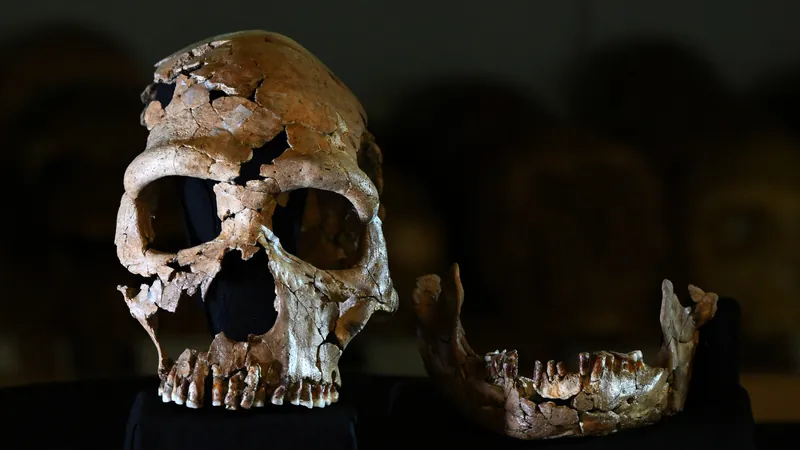
Unlocking the Mystery: Could Neanderthal DNA Be Behind a Deadly Brain Disorder?
2025-07-23
Author: Li
Shocking Discovery Links Neanderthal Genes to Fatal Condition
In an astonishing twist of our evolutionary tale, researchers have revealed that ancient Neanderthals may have left a lasting mark on our DNA, contributing to a rare but potentially fatal condition known as Chiari malformation type I. This stunning finding suggests that those who share genetic heritage with these prehistoric humans could be at risk of a disorder that causes the brain to bulge through the skull.
What Is Chiari Malformation Type I?
Chiari malformation type I primarily affects the cerebellum, the area of the brain responsible for coordinating movements. In individuals with this condition, the cerebellum can protrude through the base of the skull into the spinal canal. Symptoms can range from debilitating headaches and neck pain to dizziness, with severe cases potentially leading to life-threatening complications.
The Prevalence and Symptoms You Should Know
Initially identified in the 1800s, this disorder is thought to affect about 1 in 1,000 people. However, emerging imaging studies suggest it could be much more common, possibly affecting 1 in 100 individuals, many of whom may be unaware due to mild symptoms. Treatment varies; mild cases might be addressed with muscle relaxants, while severe instances could require surgical intervention.
Neanderthal DNA: The Ancient Connection
A groundbreaking 2013 study hinted at a fascinating link between Neanderthal interbreeding and Chiari malformation type I, suggesting that the shared DNA might lead to structural differences in the skull. Modern human skulls are rounder, whereas Neanderthal skulls are more elongated, raising questions about how our ancient relatives influenced cranial development.
New Research Offers Eye-Opening Insights
The latest research, which involved 3D scans of 103 skulls—46 with Chiari malformation type I and 57 without—has shown that those affected bear a closer resemblance to Neanderthal skulls than their unaffected counterparts. This exciting discovery opens the door to a deeper understanding of the condition and the potential role of Neanderthal genetics in modern health.
What’s Next for Chiari Malformation Research?
While these findings offer an enlightening perspective, researchers caution that more studies are needed for definitive conclusions. Future investigations could involve analyzing additional fossil skulls and expanding research into Africa to see if similar patterns emerge.
Potential for Early Detection and Intervention
Should a connection between Neanderthal genes and Chiari malformation type I be established, it could pave the way for early genetic screenings during childhood health assessments. Identifying children at greater risk could lead to proactive monitoring and management, dramatically improving outcomes.
As this research continues to unfold, one thing is clear: our ancient ancestors are still influencing our lives in ways we are only beginning to understand.
Published Findings and Future Studies
These compelling findings were published in the journal Evolution, Medicine, and Public Health on June 27, shining a light on the ongoing interplay between our ancient genes and contemporary health challenges.


 Brasil (PT)
Brasil (PT)
 Canada (EN)
Canada (EN)
 Chile (ES)
Chile (ES)
 Česko (CS)
Česko (CS)
 대한민국 (KO)
대한민국 (KO)
 España (ES)
España (ES)
 France (FR)
France (FR)
 Hong Kong (EN)
Hong Kong (EN)
 Italia (IT)
Italia (IT)
 日本 (JA)
日本 (JA)
 Magyarország (HU)
Magyarország (HU)
 Norge (NO)
Norge (NO)
 Polska (PL)
Polska (PL)
 Schweiz (DE)
Schweiz (DE)
 Singapore (EN)
Singapore (EN)
 Sverige (SV)
Sverige (SV)
 Suomi (FI)
Suomi (FI)
 Türkiye (TR)
Türkiye (TR)
 الإمارات العربية المتحدة (AR)
الإمارات العربية المتحدة (AR)